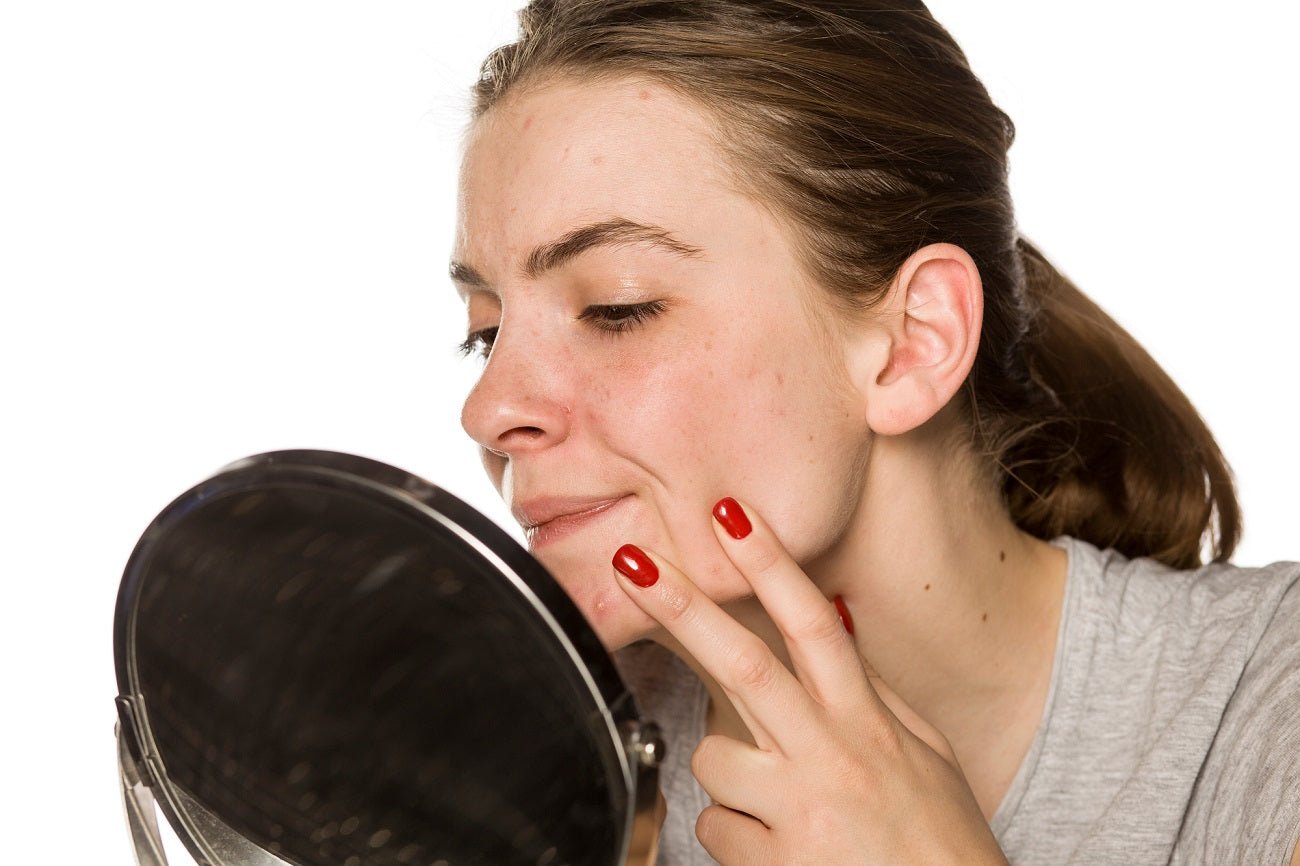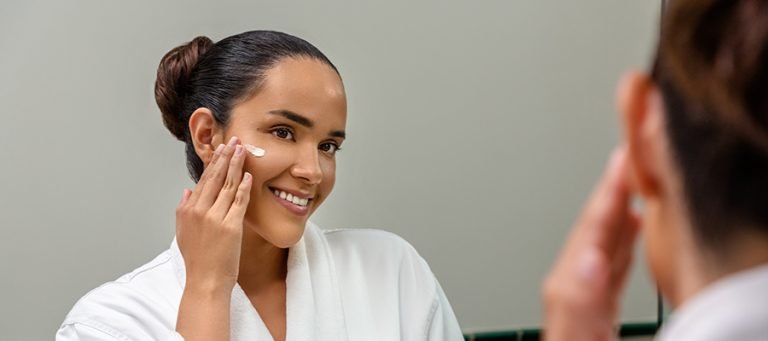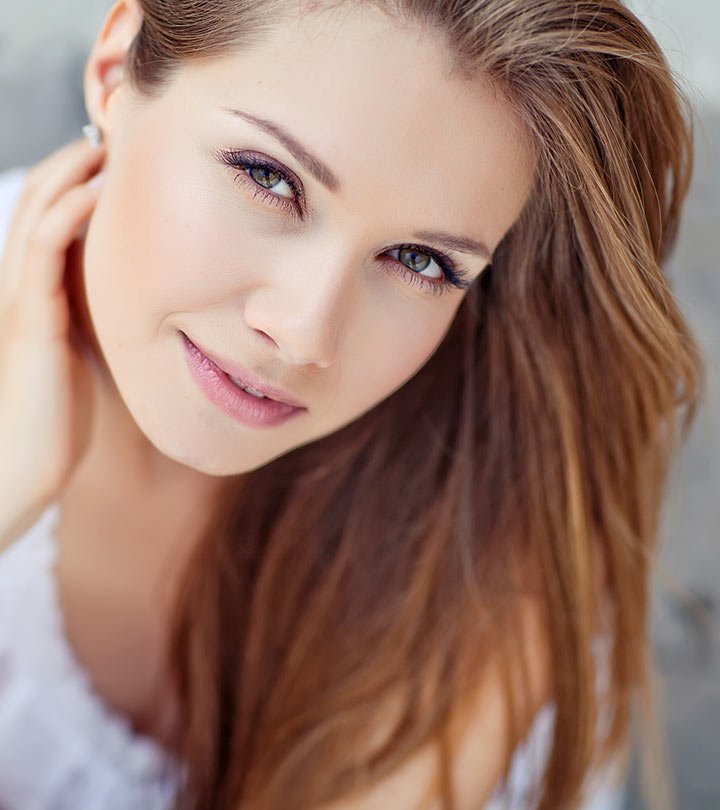How to use it and how it works
What is benzoyl peroxide?
Benzoyl peroxide is an excellent medicine for the treatment of acne. Also known as BPO, it is available in both prescription and OTC non-prescription cleansers, gels and creams made from 2 to 10% concentrations. Technically, benzoyl peroxide is a synthesized peroxide. The reality is that benzoyl peroxide is such a well-regarded medicine that it is on the World Health Organization’s List of Essential Medicines.
How does benzoyl peroxide work to fight acne?
Benzoyl peroxide is well studied and proven to reduce the number and severity of acne lesions in 2 main ways:
1. Benzoyl peroxide is bactericidal.
Meaning it kills the acne causing bacteria called Cutibacterium acnes (formerly called P. acnes) by oxidizing bacterial proteins. Unlike antibiotics, this bacteria has not developed resistance to benzoyl peroxide like it has to all antibiotics used to treat acne. Lower concentrations of benzoyl peroxide are as effective at killing the acne causing bacteria as the higher concentrations. Lower concentrations are also less irritating to sensitive skin.
2. Benzoyl peroxide is a keratolytic and slightly ‘sebostatic’.
Meaning it clears out blackheads and keratin blockages in pores and can reduce skin oil production. It also changes the oil in your pores to make it less likely to provoke pimples; benzoyl peroxide can help to reduce inflammation and redness from inflammatory acne lesions.
What types of acne is benzoyl peroxide good for?
Benzoyl peroxide for acne pimples

Benzoyl peroxide is excellent at treating pimples. These are the inflammatory lesions of acne vulgaris, which is the most common type of acne. Inflammatory acne vulgaris is characterized by pustules, cysts, red papules and nodules. The acne causing bacteria called C. acnes plays a big role in pimple formation and benzoyl peroxide is the best topical medicine for killing this bacteria to clear acne.
Benzoyl peroxide for cystic acne
Cystic acne is a deep form of inflammatory acne. Deep cysts can become very large and scar. Often these cysts don’t reach the surface of the skin to become a pustule but they are filled with pus and the surrounding skin is very inflamed. Benzoyl peroxide will help to control the acne causing bacteria in the pores but this type of acne should be treated by a dermatologist.
Benzoyl peroxide for blackheads and whiteheads
Blackheads and whiteheads are called comedones. They are the noninflammatory lesions of acne vulgaris and represent plugs in the pores. Benzoyl peroxide is both keratolytic, meaning it breaks up the plugs, and sebostatic, meaning it reduces sebum to help break up the plugs. These two benefits of benzoyl peroxide target comedones to help heal acne.
Benzoyl peroxide for acne scars
Benzoyl peroxide helps reduce acne scars by treating acne lesions to prevent scarring; smaller and fewer acne lesions equate to less acne scarring.
How fast does benzoyl peroxide work to treat acne?
Benzoyl peroxide works quickly to treat acne, and you will start to see results in under a week. It helps blackheads, whiteheads and red acne pimples. In fact, after applying benzoyl peroxide twice daily for 2 weeks, the acne causing bacteria may be reduced by as much as 98% and the pore-irritating fatty acids in sebum by 50%. That’s powerful when it comes to treating acne.
Benzoyl peroxide is absolutely unique for treating acne. It’s why I include benzoyl peroxide in my two most popular acne kits, one for facial acne and one for body acne.

My Ultimate Acne Solutions Kit for the face includes a medicated salicylic acid and glycolic acid Acne Cleanser, Benzoyl Peroxide Acne Treatment Cream and an acne friendly moisturizer to fight skin irritation.
My Back and Body Acne Kit includes a Benzoyl Peroxide Acne Cleanser to alternate with Foaming Zinc Cleanser and a Salux Cloth to apply the cleansers. Foaming Zinc helps fight the yeast that often contributes to back acne. Together with benzoyl peroxide, this kit is highly effective for back, chest and body acne.
After a couple of weeks of using the zinc soap at night and benzoyl peroxide wash in the morning, my back and chest were completely clear – which has never happened in my entire life. And a few months later, they are STILL completely clear. I can finally wear tank tops again. My skin is soft and smooth, and my husband comments on it all the time. He can’t believe the difference. So glad I found your website. Thank you so much. Jennifer B
How do you use benzoyl peroxide to treat acne?
Benzoyl peroxide acne creams

Benzoyl peroxide is best applied in a thin layer to acne prone skin. Different forms of benzoyl peroxide have different application frequencies. Dermatologist often recommend topical benzoyl peroxide medicines be applied twice daily if possible. However, once daily may be sufficient. This allows you to alternate BPO with some of the other important acne fighting skin care ingredients that don’t work when layered at the same time as benzoyl peroxide such as retinol.
My Benzoyl Peroxide 5% Acne Treatment Cream is made with medical-grade benzoyl peroxide in a non-drying base. This form of benzoyl peroxide is ultra-micronized, providing greater penetration into the skin while minimizing sensitivity and irritation common with many other benzoyl peroxide products.
Should you spot treat pimples with benzoyl peroxide?
It’s OK to just spot treat pimples but ideally you want to treat the entire acne prone area to prevent new pimples. This is because benzoyl peroxide helps to reduce new acne lesions by killing the acne causing bacteria and changing the sebum to be less irritating to the pore. In my practice, I have my patients that are struggling with many new acne lesions treat the entire acne prone area until they gain control of their acne. After the acne improves, then benzoyl peroxide can be used to spot treat the occasional pimple.
Benzoyl peroxide face and body washes

Benzoyl peroxide cleansers are great for both face and body acne treatment. When I use a medicated benzoyl peroxide cleanser, I usually select a higher concentration of the active ingredient since I know that some of the medicine is going to be rinsed off the skin and the amount left on the skin will be less concentrated. My 10% Foaming Benzoyl Peroxide Cleanser is also made with medical-grade ultra-micronized benzoyl peroxide for maximal skin penetration with minimal risk of skin irritation.
What skin care ingredients can you combine with benzoyl peroxide to treat acne?
Benzoyl peroxide can be combined with:
- salicylic acid,
- glycolic acid,
- sulfur, and
- topical antibiotics.
Benzoyl peroxide can also be combined with adapalene, which is a synthetic retinoid.
What ingredients should not be combined with benzoyl peroxide?
Retinoids other than adapalene, such as retinol and tretinoin, are deactivated by benzoyl peroxide. Benzoyl peroxide is also not typically recommended when a person is on Accutane/isotretinoin due to increased risk of skin irritation from that medicine.
Benzoyl peroxide should not be combined with hydroquinone or dapsone because the combination can cause skin irritation and staining.
What are the benzoyl peroxide side effects?
Benzoyl peroxide can cause skin irritation, redness, peeling and photosensitivity.
This risk is worse with higher strengths of BPO, making lower concentrations the logical starting point. If irritation develops, the skin usually adjusts in several weeks, though some people develop stinging, itching and swelling and can’t tolerate benzoyl peroxide.
Benzoyl peroxide can also make the treated skin more sun sensitive so it is important to find an acne-friendly sunscreen to protect treated skin.

Five Pro-tips to Help Your Skin Tolerate Benzoyl Peroxide:
- Wear broad spectrum pure mineral sunscreen to prevent sunburn.
- Use an acne friendly moisturizer (such as my Daily Moisturizing Face Cream for Oily Skin) every day on top of your benzoyl peroxide.
- Starting on a lower strength benzoyl peroxide such as my 5% Benzoyl Peroxide Acne Treatment Cream.
- Avoid harsh cleansers that over-dry your skin and lead to irritation. My Acne Treatment Cleanser is formulated in a base that is not harsh.
- Give your skin a few weeks to adjust to benzoyl peroxide before adding in other exfoliating products such as retinol or glycolic acid – or vice versa depending on which are already in your skin care routine.
Also, don’t apply BPO right next to your eyes, the opening of your nose, your lips or in your mouth as it will irritate mucus membranes (this is the type of skin that you have in your mouth, nose and eyes).
What are the sensitive complexion problems that may never tolerate benzoyl peroxide?
Know that some skin types are just too sensitive for benzoyl peroxide. This includes people with
- highly sensitive erythematotelangiectatic type 1 rosacea,
- eczema patients, and
- those who struggle with seborrheic dermatitis.
Most benzoyl peroxide intolerance is due to irritation. Rarely, a person may also become allergic to benzoyl peroxide, though allergy is very uncommon. BPO allergic people will not tolerate even low concentrations or less frequent exposure to benzoyl peroxide on their skin. Importantly, allergic reaction to BPO is uncommon and most irritation reactions can be overcome with the 5 tips above.
Benzoyl peroxide is known to stain clothing
Benzoyl peroxide will bleach fabric! This means that you do not want to wipe off benzoyl peroxide onto colored bath towels. Benzoyl peroxide will also bleach clothing, including when it runs onto your clothing when you sweat. It will also bleach your pillow case if you apply it at night. I recommend using white bath towels and bed linens when using benzoyl peroxide. I also don’t recommend wearing your favorite colored clothing if there is benzoyl peroxide on the skin under or adjacent to your colored clothing.

Benzoyl peroxide vs. salicylic acid; can you use them together to treat acne?
Salicylic acid and benzoyl peroxide are the two most well-known and effective non-prescription acne fighting medicines. They both work really well to treat acne because,
- both help remove dead cells clogging your pores,
- benzoyl peroxide kills the acne causing bacteria, and
- salicylic acid is the best ingredient to penetrate deeply into oily pores.
The bottom line with salicylic acid and benzoyl peroxide:
You can use these medicines together for additive benefit! The salicylic acid will help all topical products penetrate better into oily pores. Benzoyl peroxide is the ingredient to use to kill the acne causing bacteria. Together, these acne medicines work better than they do alone.

Both benzoyl peroxide and salicylic acid can be irritating so « start low and slow » as we say at the office. If you think your skin may be sensitive, start with one ingredient and slowly add in the second. In my Ultimate Acne Solutions Kit, the Acne Treatment Cleanser contains a full 2% salicylic acid (the highest allowed concentration) plus glycolic acid. Start with it and the Daily Moisturizing Face Cream. Once you are sure you skin is tolerating the cleanser, then add the Benzoyl Peroxide 5% Acne Treatment Cream. Apply the Daily Moisturizer on top. I’ve taken the work out of acne treatment by creating this kit.
Benzoyl peroxide, salicylic acid and glycolic acid can be used together to treat the pimples and blackheads of acne.
I’ve combined these 3 acne fighting ingredients for years in my dermatology practice. It’s important to start slow and always use an acne friendly moisturizer to fend off dryness and irritation while your acne is responding to this powerful trio of ingredients. – Dermatologist Dr. Cynthia Bailey
Benzoyl peroxide cleansers are the best way to treat back and chest acne.

Applying creams is difficult on the large expanse of chest and back skin. Instead, use medicated cleansers. My Foaming Benzoyl Peroxide 10% Cleanser can be applied with a Salux Shower Cloth. After rinsing-off the cleanser’s lather from skin in the shower, medicated benzoyl peroxide medicine will remain behind to treat acne (and bleach fabric so wear white). You can alternate this with Foaming Zinc Cleanser to treat the common type of back and chest acne called Pityrosporum folliculitis. All the products come in my Back Acne Kit.
Can you use benzoyl peroxide if you are pregnant or nursing?
I have to say no. While there is minimal systemic absorption of BPO into the body, it is unclear if benzoyl peroxide is safe to use during pregnancy or lactation. Unless directed by your treating physician, I need to say that the use of BPO should be avoided during pregnancy and nursing.
What’s the bottom line with benzoyl peroxide treatment of acne?
Benzoyl peroxide is proven to kill the acne causing bacteria better than any topical antibiotic. It also helps break up blackheads and is available without prescription. It combines with many other important acne medicines such as salicylic acid. Skin irritation is the most common problem with benzoyl peroxide and it can be controlled by starting low and slow and by using an acne-friendly moisturizer to prevent skin dryness.
References:
J Drugs Dermatol. 2013;12(suppl 6):s73-s76.
Matin T, Goodman MB. Benzoyl Peroxide. [Updated 2021 Oct 20]. In: StatPearls [Internet]. Treasure Island (FL): StatPearls Publishing; 2022 Jan-.
Guidelines of care for the management of acne vulgaris, JAAD, VOLUME 74, ISSUE 5, P945-973.E33, MAY 01, 2016
Kircik LH. The role of benzoyl peroxide in the new treatment paradigm for acne. J Drugs Dermatol. 2013 Jun 1;12(6):s73-6. PMID: 23839205.
Sagransky M, Yentzer BA, Feldman SR. Benzoyl peroxide: a review of its current use in the treatment of acne vulgaris. Expert Opin Pharmacother. 2009 Oct;10(15):2555-62. doi: 10.1517/14656560903277228. PMID: 19761357.
Nacht S, Gans EH, McGinley KJ, Kligman AM. Comparative activity of benzoyl peroxide and hexachlorophene. In vivo studies against propionibacterium acnes in humans. Arch Dermatol. 1983 Jul;119(7):577-9. PMID: 6222704.
Afifa Qidwai, Manisha Pandey, Sarvesh Pathak, Rajesh Kumar, Anupam Dikshit,
The emerging principles for acne biogenesis: A dermatological problem of puberty, Human Microbiome Journal, Volume 4, 2017, Pages 7-13,
Author: Dr. Cynthia Bailey M.D. is a Board Certified dermatologist practicing dermatology since 1987. She has done well over 200,000 skin exams during her career and authors the longest running physician written skin health blog in the world.







